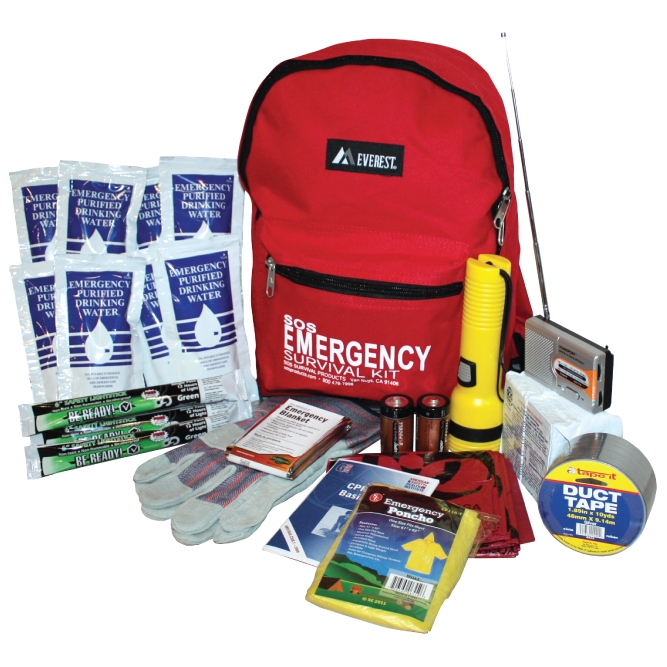Strategy, Prepare, Dominate: Emergency Preparedness for Today's Difficulties
Strategy, Prepare, Dominate: Emergency Preparedness for Today's Difficulties
Blog Article
Just How to Establish a Comprehensive Emergency Readiness Strategy
In the world of readiness, developing a comprehensive emergency situation strategy is not merely a task to check off a listing; it is a crucial foundation of any kind of company or individual's durability method. From all-natural disasters to unanticipated crises, the ability to prepare for, mitigate, and react efficiently can suggest the difference between chaos and control. By thoroughly crafting a strategy that addresses various aspects of emergency situation monitoring, consisting of threat assessment, communication procedures, resource allowance, and critical decision-making, one can lay a solid structure for safeguarding possessions, procedures, and lives. The true efficacy of such a strategy exists not only in its development but also in its recurring upkeep and adaptation to evolving obstacles and hazards.
Significance of Emergency Situation Preparedness
Emergency situation readiness is vital for reducing possible risks and making sure the safety of communities and individuals. In today's globe, where all-natural disasters, public wellness situations, and other emergency situations can strike without caution, being prepared can make a significant difference in decreasing the impact of these events. By having a well-balanced emergency situation readiness plan in location, individuals and organizations can react properly, protect lives, and minimize residential or commercial property damages.
Among the key reasons emergency preparedness is crucial is its role in conserving lives. When emergency situations occur, having a plan that details clear treatments for evacuation, interaction, and emergency action can assist individuals act quickly and decisively. This can avoid injuries and casualties by making sure that individuals know what actions to require to stay safe
Moreover, emergency preparedness improves the strength of areas. By promoting a society of preparedness and preparation for various situations, neighborhoods can jump back faster from disturbances and catastrophes. This durability is necessary for keeping security, connection of operations, and total wellness in the face of difficulty.
Assessing Potential Dangers
Thinking about the significance of being gotten ready for unforeseen occasions, the first action in creating an effective emergency situation readiness plan involves thoroughly evaluating and examining possible risks. This analysis calls for a thorough review of all feasible threats that might influence the company, taking into consideration aspects such as place, market, and historic data on cases. By recognizing these threats, organizations can prioritize their readiness initiatives and allot sources successfully to alleviate the most considerable hazards.
Typical risks that companies may deal with consist of all-natural calamities like quakes, hurricanes, or floods, technical threats such as power failures or data breaches, in addition to human-caused dangers like mishaps or willful acts of physical violence. Conducting a danger evaluation also includes considering the prospective effect of these events on the company's procedures, employees, clients, and reputation. By conducting a complete risk assessment, companies can establish customized emergency situation response plans that resolve their specific susceptabilities and make certain efficient preparedness for any kind of prospective situation.
Producing an Interaction Plan
Establishing a detailed and clear interaction strategy is necessary for effective emergency readiness within companies. In times of crisis, communication plays an essential role in making sure the safety and security and well-being of workers, stakeholders, and the area. A well-balanced interaction plan should lay out clear lines of communication, mark essential workers liable for interaction tasks, and establish procedures for sharing information rapidly and precisely.
One trick facet of creating a communication plan is identifying main and alternating interaction networks (EMERGENCY PREPAREDNESS). These can include email, text messaging, phone trees, social networks platforms, and public address systems. It is critical to ensure that these channels are dependable, easily accessible, and regularly tested to guarantee their effectiveness during emergencies

Building an Emergency Set
Given the essential value of readiness in times of situation, a crucial component that organizations must attend to is the establishment of an emergency package. When putting together an emergency situation kit, it is important to take into consideration the particular demands and scenarios of the organization. In addition, organizations need to consist of vital files, such as call lists, insurance info, and emergency situation response plans, in waterproof containers within the kit.
Establishing Discharge Procedures
To make certain the safety and orderly emptying of employees during emergencies, companies have to establish reliable and clear discharge treatments. Emptying treatments need to include a series of possible circumstances, consisting of fires, natural calamities, or other emergencies that require speedy evacuation.

Additionally, organizations need to establish a system for accountancy for all employees during an evacuation to make sure that every person has safely left the properties. Communication plays an important function in discharge procedures, with clear directions on exactly how to leave and when to do so. Normal testimonial and upgrading of evacuation procedures based on comments and altering scenarios are important to maintaining the efficiency of the plan.
Final Thought
To conclude, creating a comprehensive emergency situation preparedness strategy is essential for ensuring the safety and security and health of people in the event of a calamity (EMERGENCY PREPAREDNESS). By assessing potential risks, creating a communication strategy, building an emergency situation package, and developing discharge view companies, treatments and individuals can be better geared up to respond effectively to emergencies. It is important to focus on readiness efforts to minimize the influence of calamities and shield lives and residential or commercial property
In the world of readiness, establishing an extensive emergency strategy is not simply a task to examine off a checklist; it is a crucial foundation of any type of company or individual's resilience method. When emergencies take place, having a plan that lays out clear treatments for interaction, emptying, and emergency feedback can assist individuals act quickly and emphatically. other. By conducting a complete threat analysis, companies can develop tailored emergency response plans that address their particular vulnerabilities and guarantee efficient readiness for any type of prospective dilemma
Establishing a detailed and clear interaction plan is vital for efficient emergency preparedness within organizations. By assessing possible threats, producing an interaction plan, developing an emergency situation kit, and establishing evacuation people, companies and procedures can be better furnished to react efficiently to emergency situations.
Report this page